VERY RARE! WWII Operation Overlord D-Day Utah Beach Ravenoville U. S. Combat Map
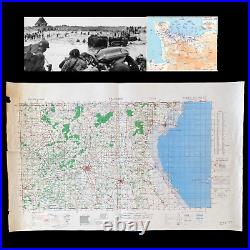
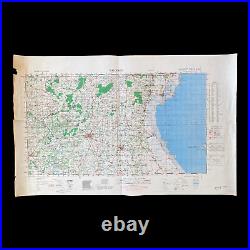
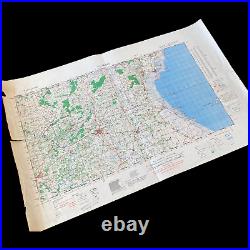
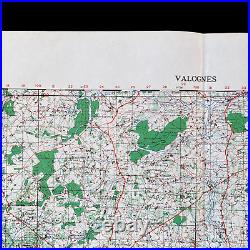
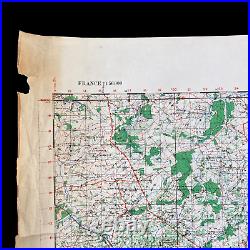
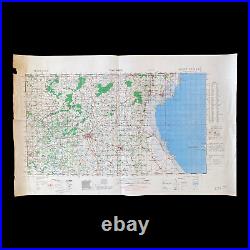
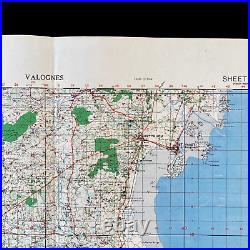
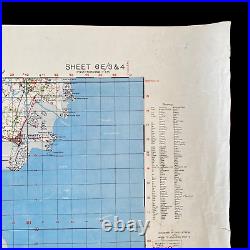
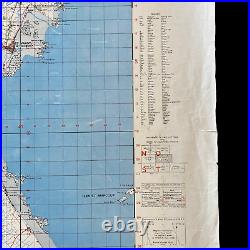
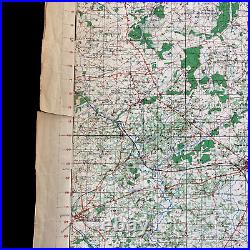
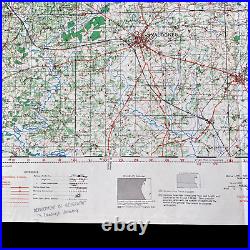
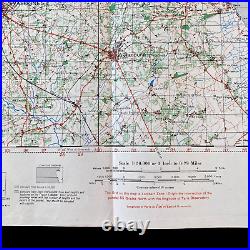
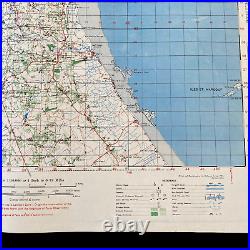
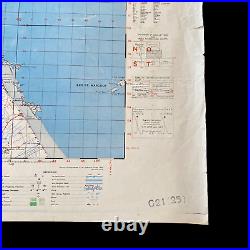
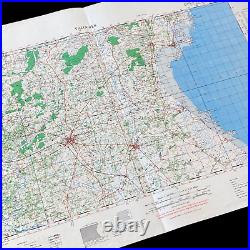
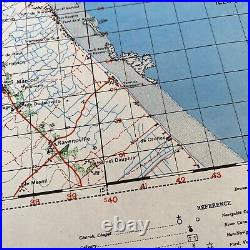
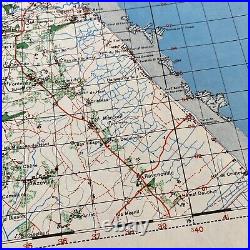

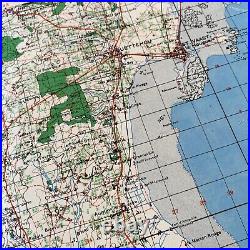

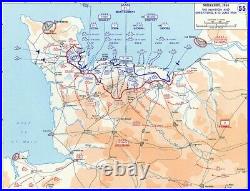
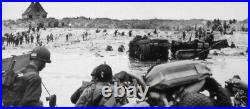

The initial attack on Utah Beach was carried out by troops who had landed from amphibious vehicles known as LCVPs (Landing Craft, Vehicle, Personnel). These troops faced heavy fire from the German defenders, who were well-entrenched in concrete bunkers and pillboxes. The LCVPs were also hampered by obstacles placed in the water by the Germans, such as wooden stakes and metal hedgehogs, which made it difficult for them to approach the beach. Despite these challenges, the troops managed to land on the beach and begin their assault on the German defenses. The fighting on Utah Beach was intense, with both sides suffering heavy casualties.
However, the determination and bravery of the Allied troops eventually prevailed, and they were able to push the Germans back and secure the beachhead. This rare and museum-grade Normandy D-Day Operation Overlord artifact is an original WWII U.
Combat assault map of Utah Beach and Ravenoville. In the spring of 1944, the village of Ravenoville was occupied by the 4th company of the Oberleutnant Werner belonging to the Grenadier-Regiment 919 (709 Infantry Division).
The commune is situated to the north of the head of the bridge that the Allies want to install in the Cotentin on D-Day. Ravenovile was liberated on D-Day +1 by the 377th Parachute Field Artillery Battalion, 101st Airborne Division, 501st Parachute Infantry Regiment, 101st Airborne Division, 502nd Parachute Infantry Regiment, 101st Airborne Division, 506th Parachute Infantry Regiment, 101st Airborne Division, 508th Parachute Infantry Regiment, 82nd Airborne Division, 22nd Infantry Regiment, 4th Infantry Division, 39th Infantry Regiment, 9th Infantry Division. Ravenoville was located at the junction of the "higher" coastal road and the road from Ste Mere Eglise to the coast. It was therefore strategic to hold it as it controlled part of the northern flank of the airborne attack and of the Utah beach landing. Paratroopers of the 502 and 506 regiments held it with Major Stopka until relieved by the 4th Infantry Division. Ravenoville was made world-famous by the picture of James Flanagan, the U. S paratrooper holding the famously captured flag in front of the Marmion's farm. On June 6th, 1944, the Allied Forces carried out the largest amphibious invasion in history, landing troops and equipment along the coast of Normandy, France. This operation, codenamed Operation Overlord, marked the beginning of the end for Germany in World War II. Among the many landing zones along the coast of Normandy were Ravenoville and Utah Beach, both of which played critical roles in the success of the operation. Ravenoville is a small village located just north of Utah Beach, and was situated near the northernmost boundary of the invasion area. It was a strategically important location for the Allies, as it provided access to the Cherbourg Peninsula and the deepwater port of Cherbourg.The capture of Cherbourg was a key objective for the Allies, as it would provide a crucial supply route for troops and equipment throughout the rest of the campaign in Europe. The initial assault on Ravenoville was carried out by the 2nd Battalion of the 508th Parachute Infantry Regiment, part of the 82nd Airborne Division. The paratroopers dropped behind enemy lines in the early hours of the morning on June 6th, and immediately began their mission to capture the town. The initial resistance they encountered was light, and the paratroopers quickly secured their objective. However, as the day wore on, the Germans launched several counterattacks in an attempt to retake the town.
The paratroopers fought fiercely, but were greatly outnumbered. Nevertheless, they managed to hold off the German attacks long enough for reinforcements to arrive from Utah Beach. The arrival of these reinforcements allowed the paratroopers to push the Germans back and secure their position in Ravenoville. The capture of Ravenoville was a significant achievement for the Allies, as it provided them with a foothold in the Cherbourg Peninsula.
It also allowed them to establish a defensive perimeter around Utah Beach, which was critical to the success of the operation as a whole. Utah Beach, situated just south of Ravenoville, was one of the five landing zones along the Normandy coast. It was assigned to the US 4th Infantry Division, and was considered to be one of the easier beaches to land on due to its wide expanse of flat, sandy shoreline.Nevertheless, the landing was not without its challenges. The capture of Utah Beach was a crucial moment in the D-Day landings, as it provided a vital link between the various landing zones along the coast. It also allowed the Allies to establish a beachhead from which they could launch further offensives against the Germans. In conclusion, the capture of Ravenoville and Utah Beach played critical roles in the success of the D-Day landings on June 6th, 1944.
The capture of Ravenoville provided the Allies with a foothold in the Cherbourg Peninsula and allowed them to establish a defensive perimeter around Utah Beach. Full history of Ravenoville and Utah Beach. Although Ravenoville is more than three kilometers north of US-designated "A" jump zone for the 502nd Parachute Infantry Regiment (101st Airborne Division), several sticks of this regiment land in the immediate vicinity of the village at First hours of June 6, 1944, victims of navigational errors by pilots who are hampered by the firing of German antiaircraft artillery.During the night and the morning of June 6th, the junior commander of the 3rd Battalion of the 502nd Parachute Infantry Regiment (PIR), Major John P. Stopka, gathers all the isolated elements near Ravenoville. These paratroopers guided by Stopka attack a farm (formerly of the Marmion family) south of Ravenoville, which was turned into a fulcrum by the Germans to control the crossroads between departmental roads 14 and 15. Lost or isolated paratroopers reinforce the position: these men belong mainly to the 1st battalion of the 506th PIR (1/506th) and the 2nd battalion of the 502nd PIR (2/502nd), but Stopka also gathers men from the 3/502nd, 2/506th, battery A of the 377th Parachute Field Artillery Battalion and the 508th PIR (82nd Airborne Division). They defended themselves against several German attacks before retreating the next day in direction of Sainte-Marie-du-Mont.
On June 7, 1944, the 1st Battalion of the 22nd Infantry Regiment (4th Infantry Division) began its offensive from the northern outskirts of Saint-Germain-de-Varreville and reached Ravenoville in the late afternoon. Reconnaissance is carried out by elements of the 3rd battalion to the place of the Ravenoville Châlet on the beach, where the Wn 103 strongpoint (also known as Stp 12) is located.This site is defended along the dunes by an anti-tank wall. On the evening of June 7, the 1st Battalion of the 22nd Infantry Regiment was located about one kilometer north of Ravenoville, and the Americans were cleaning the beach where three pockets of resistance still operate (at Hamel de Cruttes, Ravenoville and about one kilometer north of the Châlet), they were neutralized only on June 12 by the 1st Battalion of the 39th Infantry Regiment (9th Infantry Division). This item is in the category "Collectibles\Militaria\WW II (1939-45)\Original Period Items\United States\Field Gear, Equipment".
The seller is "premierrelics" and is located in this country: US. This item can be shipped worldwide.
- Conflict: WW II (1939-45)
- Original/Reproduction: Original
- Theme: Militaria
- Region of Origin: United States
